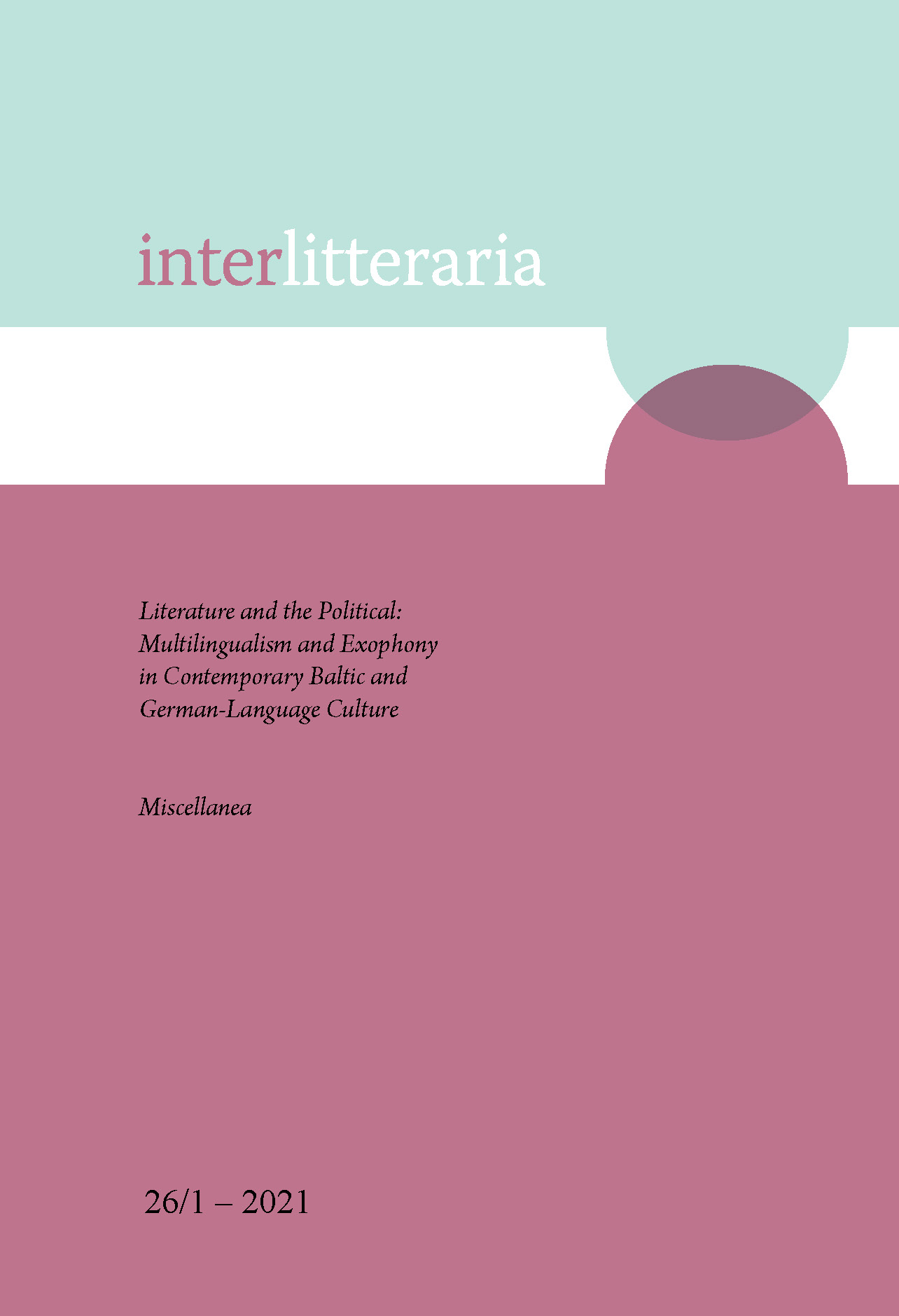Die drei Ortssprachen Estlands in Edzard Schapers Roman Der Henker und in seiner estnischen Übersetzung
DOI:
https://doi.org/10.12697/IL.2021.26.1.7Keywords:
literary multilingualism, Estonian, German, Russian, Baltic German, Edzard SchaperAbstract
The Three Local Languages of Estonia in Edzard Schaper’s novel The Executioner and in its Estonian Translation. This article analyses the reflection of everyday multilingualism in Edzard Schaper’s novel Der Henker (The Executioner, 1940) and its translation into Estonian by Katrin Kaugver (Timukas, 2002). The novel deals with the 1905 revolution in the current Estonian territory, which was at that time a province of the Russian Empire. The novel was written shortly before the outbreak of World War II and translated into Estonian 60 years later after the end of the Soviet era. The complexity and the fluctuation of the contextual elements between the storyline of the novel, the time of its writing and the time of the translation make the novel a rewarding object of research into settings of multilingualism in everyday life. The article focuses on the manifest and latent forms of multilingualism, on the functions of the local languages, as well as on the question whether it helps to analyse language use in real life situations. It also looks at how local multilingualism, dominated by three local languages – German, Russian and Estonian – has been translated from one local language (German) into another local language (Estonian). The examples chosen in the article highlight some regularities in the use of the local and other languages, and offer a cultural-historical and socio-political interpretation of the use of multilingualism.
Downloads
Downloads
Published
Issue
Section
License
The contents of Interlitteraria are published under CC BY-NC-ND licence.


